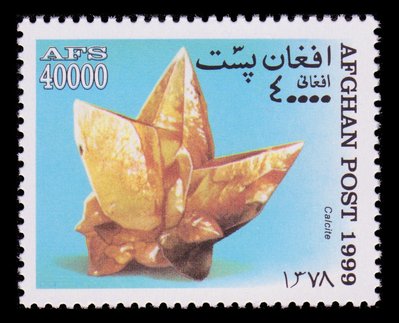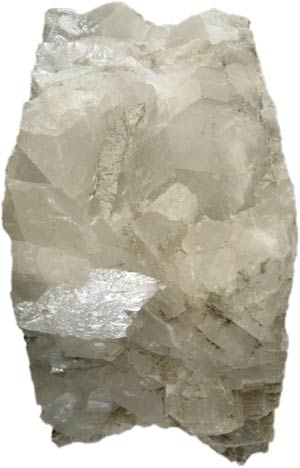- nama kimia: CaCO3, Calcium Carbonate
- class: Carbonates
- group: Calcite
- uses: in cements and mortars, production of lime,limestone is used steel industry;glass industry,ornamental stone,chemical and optical uses and also used as mineral specimens.
 |
| sebab cantiklah,mereka letakkan calcite sebagai imej untuk setem mereka ;D |
PHYSICAL CHARACTERISTICS OF CALCITE:
- Color is extremely variable but generally white or colorless or with light shades of yellow, orange, blue, pink, red, brown, green, black and gray. Occasionally iridescent.
- Luster is vitreous to resinous to dull in massive forms.
- Transparency: Crystals are transparent to translucent.
- Crystal System is trigonal; bar 3 2/m
- Crystal Habits are extremely variable with almost any trigonal form possible. Common among calcite crystals are the scalenohedron, rhombohedron, hexagonal prism, and pinacoid. Combinations of these and over three hundred other forms can make a multitude of crystal shapes, but always trigonal or pseudo-hexagonal. Twinning is often seen and results in crystals with blocky chevrons, right angled prisms, heart shapes or dipyramidal shapes. A notch in the middle of a doubly terminated scalenohedron is a sure sign of a twinned crystal. lamellar twinning also seen resulting in striated cleavage surfaces. Pseudomorphs after many minerals are known, but easily identified as calcite. Also massive, fibrous, concretionary, stalactitic, nodular, oolitic, stellate, dendritic, granular, layered, etc. etc.
- Cleavage is perfect in three directions, forming rhombohedrons.
- Fracture is conchoidal.
- Hardness is 3 (only on the basal pinacoidal faces, calcite has a hardness of less than 2.5 and can be scratched by a fingernail).
- Specific Gravity is approximately 2.7 (average)
- Streak is white.
- Other Characteristics: refractive indices of 1.49 and 1.66 causing a significant double refraction effect (when a clear crystal is placed on a single line, two lines can then be observed), effervesces easily with dilute acids and may be fluorescent, phosphorescent, thermoluminescence and triboluminescent.
The carbon dioxide gas (CO2) is given off as bubbles and the calcium dissolves in the residual water. Any acid, just about, can produce these results, but dilute hydrochloric acid or vinegar are the two recommended acids for this test. Other carbonates such as dolomite or siderite do not react as easily with these acids as does calcite and this leads to differentiating these somewhat similar minerals more readily.
 |
| fizz test.tadaaaa!!! |
credits to:
http://www.galleries.com/minerals/carbonat/calcite/calcite.htm

No comments:
Post a Comment